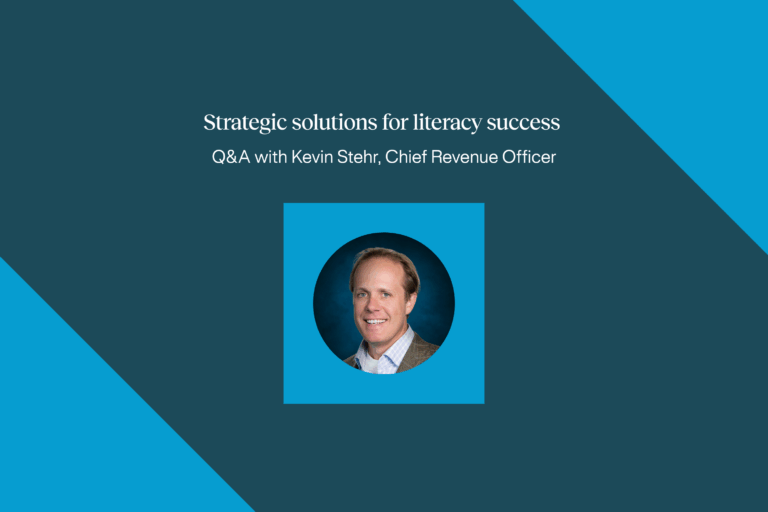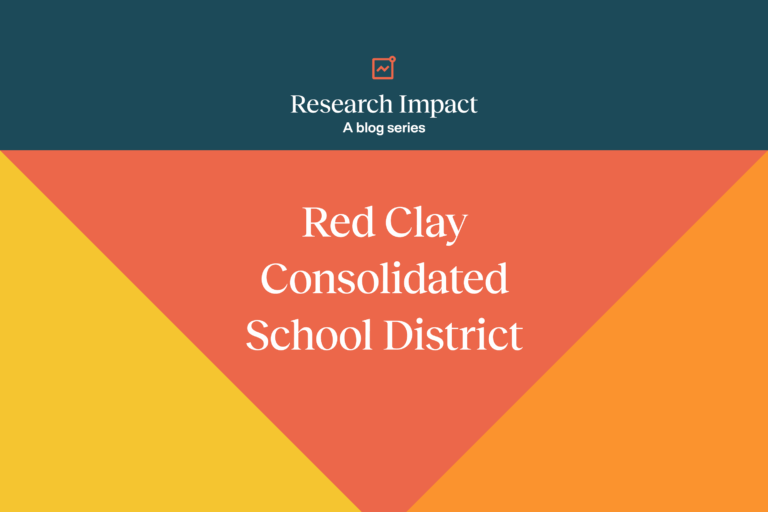Guide to literacy instruction

Mastering Literacy Instruction: Beyond the Basics
The five components of literacy instruction
As a teacher of reading and writing, you want to deliver the most effective literacy instruction possible. You want to help unlock the opportunity for your students to reach their full potential as readers and writers. It’s also possible that you have had at least one experience where you felt less than confident about your approach to literacy instruction. Or that you’re not familiar with what the most effective approach to literacy instruction is. We now know that with evidence-aligned instruction that’s based in the science of reading, 95% or more of children can learn to read.
In the year 2001, The National Reading Panel reported that the most effective reading instruction included five components. Understanding the five essential components of literacy instruction and the way that they should be integrated and developed overtime and with direct instruction, is critical for building strong foundational skills for both reading and writing. Here’s a breakdown of each element and tips for teaching them effectively.
1. Phonemic awareness
Definition: Phonemic awareness is the ability to identify and manipulate the smallest units of sounds (phonemes) in spoken words. It stands as one of the key skills in preparing children for reading and can be an early indicator or predictor whether or not a student will struggle as they learn to read.
Tips for teaching:
- Use rhyming games: Encourage students to play with rhymes and alliteration to develop their awareness of sounds in spoken language.
- Segmenting and blending activities: Practice breaking words into individual sounds and blending them back together.
- Use a multisensory approach: Students can use strategies that engage more than one learning modality: like finger tapping or arm blending. This approach can help students to solidify sound knowledge. See our guide to phonemic awareness lesson plans on the blog for more information on this!
2. Phonics
Definition: Phonics is the method of teaching reading, writing, and spelling by correlating sounds with symbols—specifically the relationship between sounds (phonemes) and their corresponding letters or letter combinations (graphemes). It encompasses the alphabetic principle: the understanding that letters represent sounds, forming the foundation of decoding written language.
Tips for Teaching:
- Explicit instruction: Teach letter-sound relationships directly and systematically (“I Do”).
- Frequent opportunity for practice: incorporate guided practice (“We Do”) so students can get timely feedback and redirection if necessary. Offer independent practice (“You Do”) so students have the opportunity to practice on their own, growing both their agency and their self confidence.
- Decodable texts: Use texts that are accessible for students based on where they are in the learning sequence, allowing students to apply their phonics knowledge in context and at the right pace.
Check out our in-depth Guide to Phonics for more information!
3. Fluency
Definition: Reading fluency is the skill that enables students to read a text accurately, quickly, and with expression. Without strong fluency skills, students will be challenged to comprehend what they read, especially as they move through grades and expand their subjects of study.
Tips for Teaching:
- Repeated reading: Have students practice reading the same text multiple times to build fluency. The NICHD research review confirmed that repeated reading and guided, repeated, oral reading show strong evidence of improving fluency.
- Choral reading: Read aloud together as a class to model fluent reading. This allows students to hear both their teacher’s voice and their peers’ voices as they say words aloud. It offers oral reading practice without the added nervousness some children will have about reading aloud on their own.
- Reader’s theater: Use scripts to practice reading with expression and intonation. This is a great activity that students can do together as they work towards a common goal.
4. Vocabulary
Definition: Vocabulary describes the group of words that people recognize, understand, and use. Having an expansive vocabulary gives people the tools to read more efficiently and comprehend more at the same time. Vocabulary also refers to the words students must know to communicate and learn effectively.
Tips for teaching:
It’s important to consider that for students to effectively grow their vocabulary they need direct vocabulary instruction both on the meaning of well chosen words and on how to break down unfamiliar words for themselves.
- Word walls: Create a word wall to display high-frequency and new vocabulary words.
- Teach new words in context: Teach vocabulary in the context of reading and writing activities students are already doing.
- Interactive activities: Use games or activities like vocabulary bingo or creating vocabulary squares to help students engage with the words they are learning in a more authentic way.
5. Comprehension
Definition: Reading comprehension is the ability to understand and interpret what is being read based on both what you are reading and what you already know.
Skills critical to reading comprehension are:
- Connecting
- Questioning
- Predicting
- Imaging
- Inferring
- Determining importance
- Synthesizing
Tips for teaching:
- Graphic organizers: Use tools like story maps and Venn diagrams to help students organize their thoughts with regards to plot or text structure.
- Questioning and connecting: Encourage students to ask and answer questions about the text in a way that engages their prior knowledge on a topic or shows them how to make connections.
- Summarizing and synthesizing: Practice summarizing texts and pulling out big ideas and supporting details into an outline to ensure students understand what they are reading.
Building strong readers
Most students that we would consider “strong readers” couldn’t tell you what it is they do while reading that makes them a strong reader. The simultaneous processes are happening so fast and so automatically, that it can be hard to understand just what makes someone a good reader vs. someone who has difficulty.
Building strong readers always starts with building a strong foundation. When children understand the structures of spoken and written language (phonemic awareness, alphabetic principle, phonics, morphology), and the way they interact with each other to the point that it’s an automatic process for them to identify sound and spelling patterns, they will then have the cognitive space necessary for the higher order thinking and processing skills necessary for deep comprehension of what they read.
If you aren’t sure where to start with your students, assessing them to see which skills they may already have mastered and which they need support with is a great first step. Using a universal screener at the beginning of the school year can give you a general idea of where students are, but it doesn’t give you an in-depth look. Using a diagnostic assessment can help pinpoint exactly where each student has skill gaps. This not only tells you where you need to start with instruction, but can also help in forming literacy instruction groups for any intervention needs.
A last note on strong readers: we can make obvious the internal or unconscious behaviors of strong reading so that they can be taught directly. Here are some examples of skills that strong readers engage in that can be directly taught to elevate the reading skills of all students:
- Reread something that doesn’t make sense yet. Often students that are striving readers will bypass or glaze over entire sections of text because they can’t make sense of it. Teach students to reread a selection and actively engage with the parts they aren’t sure about by:
- looking up words that they don’t know,
- using vocabulary skills like breaking multisyllabic words into their parts to help them determine smaller units of meaning, or
- thinking about another time they have seen or heard an unfamiliar word to make a connection
Practicing these skills can help students build their tool box as well as to feel agency in their reading.
- Use a graphic organizer to help identify text structure and gain a deeper understanding of how the structure is connected to the content. For students that are reading more complex texts where often there is a specific structure like cause and effect, problem/solution, or compare and contrast, teaching them to use an organizer to help anchor their thinking and truly understand what they are reading helps to solidify these skills.
Meeting the needs of all learners
“It is simply not true there are hundreds of ways to learn to read…when it comes to reading we all have roughly the same brain that imposes the same constraints and the same learning sequence” (Dehaene, 2009, p. 218). While this is an important concept to hold in your understanding of how children learn to read, we also know that every child is unique and therefore we acknowledge, celebrate, and adjust instruction as necessary.
For example, students may come to us with different heritage languages. Or they may be neurodiverse learners which, by definition, tells us that they may think and process information differently than their peers. These students may require an adjustment in how much time they need to work on certain skills or perhaps more intensive support as they are learning foundational reading skills. As teachers of reading, the importance of diagnostic assessment and a targeted approach to literacy instruction and progress monitoring can’t be underscored enough. With knowledge of your students and the materials that are effective and backed by science, you can feel confident that you are meeting the literacy needs of ALL of your students.
English learners
Effective literacy instruction for English learners (ELs) must address their unique linguistic and cultural needs while also promoting language and literacy development.
Culturally responsive teaching
Culturally responsive teaching is essential, as it values and leverages students’ diverse backgrounds to make learning relevant and engaging. All teachers of EL students should have specific training in the strategies that will be most effective for helping their students learn to read. Here are a few examples:
- Recognizing and valuing diversity: Acknowledge and respect the diverse cultural and linguistic backgrounds of EL students. Incorporate multicultural literature whenever possible and try to use resources that reflect students’ experiences and heritage.
- Building on background knowledge: English learners come to us with their own lived experiences and background knowledge. Connect new learning to your students’ prior knowledge and experiences.
Components of effective literacy instruction for English learners
Although most of the key components of literacy instruction for ELs look the same—explicit vocabulary instruction, phonemic awareness, and comprehension strategies—we also consider oral language instruction in a different way for students whose primary language isn’t English. Oral language skills form the foundation for reading and writing. For all students, strong oral language abilities in English are crucial for comprehending texts and expressing ideas. For ELs, who did not grow up speaking this language at home, they often need more direct oral language instruction to help strengthen that skill.
By incorporating these strategies, educators can create an inclusive environment that supports ELs in developing strong literacy skills.
Neurodivergent learners
Supporting neurodivergent learners in literacy instruction first requires a depth of understanding that ALL children deserve the opportunity to learn to read and should be supported as such in every environment they spend time in. Knowing this, one of the most important parts becomes literacy knowledge and training for all teachers—as all teachers are teachers of reading.
Here are some helpful strategies to ensure all learners have full access to the critical literacy instruction they need to be successful:
- Provide clear, consistent routines and instructions inside of an inclusive environment. Positive reinforcement helps all students to build confidence and motivation.
- Make sure your instructional approach is multisensory: incorporate visual aids, hands-on activities, and auditory support to enhance engagement and comprehension.
- Conduct ongoing assessment and adjustments to instruction based on individual progress.This is essential to ensure that neurodivergent learners thrive in literacy development.
- Personalize instruction based on your assessment and using differentiated teaching methods and tools like graphic organizers and manipulatives to help anchor in the skills.
The impact of literacy education
Research has repeatedly shown that when children aren’t reading proficiently by the end of 3rd grade, they have a much higher probability of not earning their high school degree. Thankfully, we also know that with highly effective, direct instruction that’s based in the science of reading, 95% or more of children can learn to read. The impact of a growing number of children in this country learning to read proficiently by 3rd grade can’t be understated.
Children who have strong foundational reading skills and can decode and encode words accurately and automatically will have the cognitive availability to more deeply understand the growing complexity of texts they will continue to encounter as they progress through school. The vocabulary and concepts that middle school and high school students are expected to read about and understand are almost always multisyllabic words of an academic nature. With the right literacy instruction, students will be able to make that transition with a much greater ease, allowing for more joy, confidence, and ownership in their work.

Literacy is the most important skill a child can have. Teachers can feel confident that they are really setting their students on the right path for reading and for life with our instructional methods—and know they will impact their students positively for the long run.
Joni Maville
Literacy success stories
Interested in hearing about how schools like yours have committed to literacy instruction based in the science of reading? Check out some of our success stories to hear about how teaching reading has changed, from those who are implementing evidence-aligned literacy instruction every day.
Spotlight North Carolina: Phonics instruction takes root
Are you ready for more insights on how an entire district is growing with an aligned phonics program across instructional tiers? Read the full story and learn:
- Why it’s essential to have literacy curriculum that is aligned with the science of reading
- The importance of a step-by-step implementation plan for ensuring instructional fidelity
- How the embedded professional learning and coaching helped teachers fully understand each of the components and pacing of instruction
Structured literacy is a non-negotiable in Ohio
After receiving training on the science of reading, educators at Fairless Elementary School in Ohio determined that the next step was to add structured literacy resources into their curriculum. And it was non-negotiable. Learn about their challenges, successes, and best practices for Tiers 1 and 2, and what’s new on the horizon for Tier 3. Read the full story and learn about:
- The adoption of comprehensive phonics programs: all students benefiting from the same phonics instruction daily
- The positive impact on reading growth school-wide, including a significant increase in the percentage of second-grade students reading at or above grade level, from 56% to 71%
- The streamlined teacher workload which helped reduce the extensive preparation time required from teachers, allowing them to focus more on effective instruction
Conclusion
Mastering literacy instruction goes beyond just knowing the basics; it requires a deep understanding of the five essential components of literacy and how to effectively teach them. By focusing on phonemic awareness, phonics, fluency, vocabulary, and comprehension, educators can build a strong foundation for their students’ reading and writing skills. These components are critical for unlocking students’ potential and empowering them to achieve success in school and beyond.
By implementing evidence-aligned instructional strategies rooted in the science of reading, educators can ensure that 95% or more of their students learn to read. This not only sets students on the path to academic success but also opens up a world of opportunities for their future. As we have seen through various success stories, schools that commit to structured literacy instruction programs see significant improvements in student outcomes and teacher satisfaction.
Literacy is the cornerstone of education, and with the right approach, teachers can make a lasting impact on their students’ lives. By ensuring your literacy instruction is proven and effective, you can empower all students with the tools they need to become confident and capable readers and writers.
Sources
- https://www.nichd.nih.gov/sites/default/files/publications/pubs/nrp/Documents/report.pdf
- https://www.thedyslexiaclassroom.com/blog/multi-sensory-instruction-moving-beyond-the-sand-tray#:~:text=Incorporating%20multisensory%20strategies%20within%20phonological,auditory%2Dkinesthetic/motor%20modalities.
- Annie E. Casey Foundation. (2010). Early warning! Why reading by the end of third grade matters. KIDS COUNT special report. Baltimore, MD: Author. Retrieved from https://eric.ed.gov/?id=ED509795



